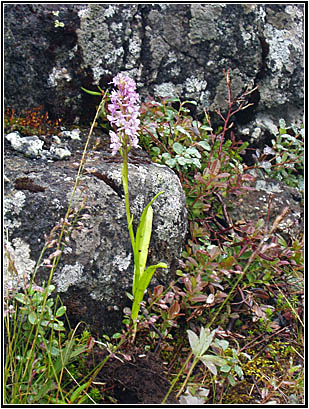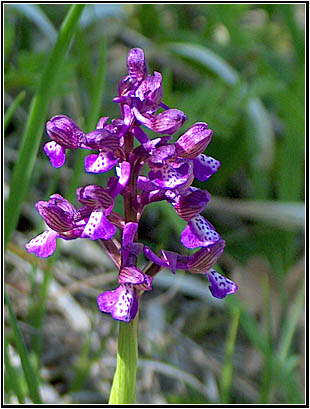|
Orchids
From Russia
|
Dr.
Irina Tatarenko is Senior Scientific Researcher and graduated
from Moscow State University in 1981.
She received PhD in 1991 for her studies of orchids in the Far
East of Russia.
From 1991 to 1994, she dealt with Red Data Book of Russia and
since 1994, she has been working as a senior researcher in Moscow
Pedagogical State University.
She published more than 50 papers and a monograph on morphology,
demography and mycorrhiza of terrestrial orchids.
She has been invited to participate in 18th WOC, as a lecturer
to talk about Orchids in Eastern Europe and Their Conservation..
|
|
 |
 Gymnadenia
conopsea in the North Urals Mountains
Gymnadenia
conopsea in the North Urals Mountains |
 Orchis
morio from the North-West Caucasus,
Orchis
morio from the North-West Caucasus,
very South of Russia |
|
ON:
Dr. Irina Tatarenko, could you tell a little about the geographical
conditions, climate and habitats of your country?
IT: Russia is quite large country with
a range of climate and habitat conditions from tundra in Arctic
zone and abobe the Polar Circle to taiga as a wide area with
coniferous forests, then to dicidious forests in the Middle
of European part of Russia, the Middle Urales, Far East of Russia,
and the Cuacasus.
ON: Concerning the orchids, where the most part of species occur?
IT: The most orchid species grow in forest
zones, in different habitats as meadows, bogs and marshes. Less
orchids occur in the vast area covered by bogs in Western Siberia,
and in dry steppes and semidesert zones in the South of Siberia,
the Southern Urales, and very South of European Part of Russia.
ON: How many genera and species? Which are the most important
genera?
IT: According to Tatarenko (1996) there
are 136 species of 43 genera in Russia. However, the amount
of species is not so certain as Dactylorhiza genus is
taxonomically too complicate to determine the certain number
of the species in it.
ON: Which are the endemic species?
IT: There is only an endemic species Liparis
sachalinensis growing on Sakhalin Island in the Far East
of Russia. Many species have boarders of their distributions
on the territory of Russia. Some species occur throughover the
territory (Cypripedium calceolus, Goodyera repens, Epipogium
aphyllum, Listera cordata, Neottia nidus-avis etc.). Other
species are European with eastern boarder of distribution in
the Urales, others are mostly Asian. Genera diversity is highest
in the Far East and the Caucasus regions.
|

Calipso
bulbosa which can grow in very North
of Russia keeping green leaf under the snow |
ON: They are terrestrial, aren't they?
IT: All species are terrestrial.
ON: Which is the biggest dangered orchid in Russia?
IT: Orchids occuring on the boarders of their
distributions are the most endangered in Russia: Gymnadenia odoratissima
in the Urales, Habenaria radiata in Primorye Territory,
Chamorchis alpina in Extreme North of Russia in Murmansk
Province. Orchids need protection in the densely populated regions
as Moscow Province, Center of European Russia and the North-West
Caucasus.
ON: What can be do for helping the conservation?
IT: Nature Zapovednics and National Parks
are the best solution for rare species conservation. The developing
of orchid cultivation in vitro would also help a lots for their
conservation.
ON: Do you have a kind of government help for this? Is there a preoccupation
about the conservation of orchids or nature in general?
IT: Government support by a law the protection
of plants listed in Red Data Book of Russia. However, this law works
unsuffisiently.
ON: Thank you very much, Dr. Irina Tatarenko. |
Photos by Irina
Tatarenko
|
Any
kind of reproduction (print, digital or anyone other) of any
type of material of this site - texts, layout, photos, images
and others - is strictly forbidden without previous written
permission by the authors.
|

|